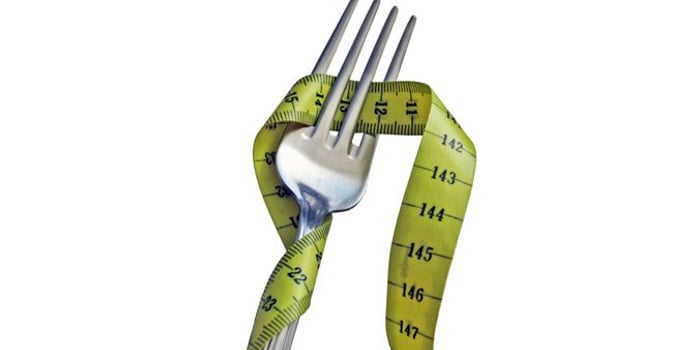Your body efficiency makes energy from the food you eat, or by breaking down certain components in your body (such as stored carbohydrates and body fat). If you're trying to lose weight, reducing your caloric intake helps deplete your body's primarily fuel sources and start burning fat. Though creating energy from stored body fat helps shed unwanted pounds, it can also cause negative side effects if you severely deprive your body of food.
Primary Fuel Sources
Your body's main source of energy is glucose, a type of sugar, which your body regulates in your bloodstream continuously by breaking down stored carbohydrates, called glycogen, into glucose as needed. Glucose keeps your body -- especially your brain -- supplied with fuel. A review published in 2014 in the International Journal of Environmental Research and Public Health reports that glucose is generally the sole fuel source for your brain. However, if you deprive yourself of calories, or carbohydrates, for too long, glucose (and glycogen stores) in your body will eventually become depleted.
Fatty Acids for Brain Fuel
The 2014 review in the International Journal of Environmental Research and Public Health reports that your central nervous system cannot use fatty acids as energy because they don't cross the blood-brain barrier. After three to four days of fasting or severe carbohydrate restriction -- of less than 20 grams daily -- your body breaks down stored body fat into ketone bodies. These ketone bodies can supply your brain with energy in the absence of glucose.
Fat Metabolism During Exercise
Your body breaks down, or metabolizes, body fat as fuel during periods of prolonged exercise. While your brain requires glucose or ketone bodies to function properly, your body can metabolize fatty acids for fuel during exercise. The University of Michigan Medical School reports that continuously exercising for more than 30 minutes shifts your body's fuel source from mainly glucose to stored body fat. Therefore, if your goal during exercise is fat loss, choose cardiovascular exercises and work out more than 30 minutes during each session.
Side Effects of Ketosis
While your body produces ketone bodies to fuel your brain during times of fasting or carbohydrate deprivation, excess ketone-body accumulation can lead to negative side effects. The Physicians Committee for Responsible Medicine reports that long-term ketosis resulting from low-carbohydrate weight-loss diets can lower blood phosphate levels, increase your risk for osteoporosis, boost your risk for developing kidney stones and cause negative side effects such as bad breath, difficulty concentrating, fatigue, constipation, kidney problems and heart-related problems.
Safest Way to Metabolize Fat
Abiding by certain guidelines will help you safely burn excess body fat for energy without negative side effects or health risks. For safe but effective weight and fat loss, eat 500 to 1,000 fewer calories than you burn off daily to shed fat at a rate of about 1 to 2 pounds weekly. Consume at least 130 grams of carbs each day, which is the carbohydrate recommended dietary allowance, or RDA. Participate in cardiovascular exercise -- such as biking, swimming, jogging, walking or using an elliptical machine -- lasting 45 to 60 minutes per session, five to seven days weekly as recommended by a review published in 2009 in The Ochsner Journal.
An experienced health, nutrition and fitness writer, Erin Coleman is a registered and licensed dietitian and holds a dietetics degree from the University of Wisconsin-Madison. She also has worked as a clinical dietitian and health educator in outpatient settings. Erin's work is published on popular health websites, such as TheNest.com and JillianMichaels.com.



